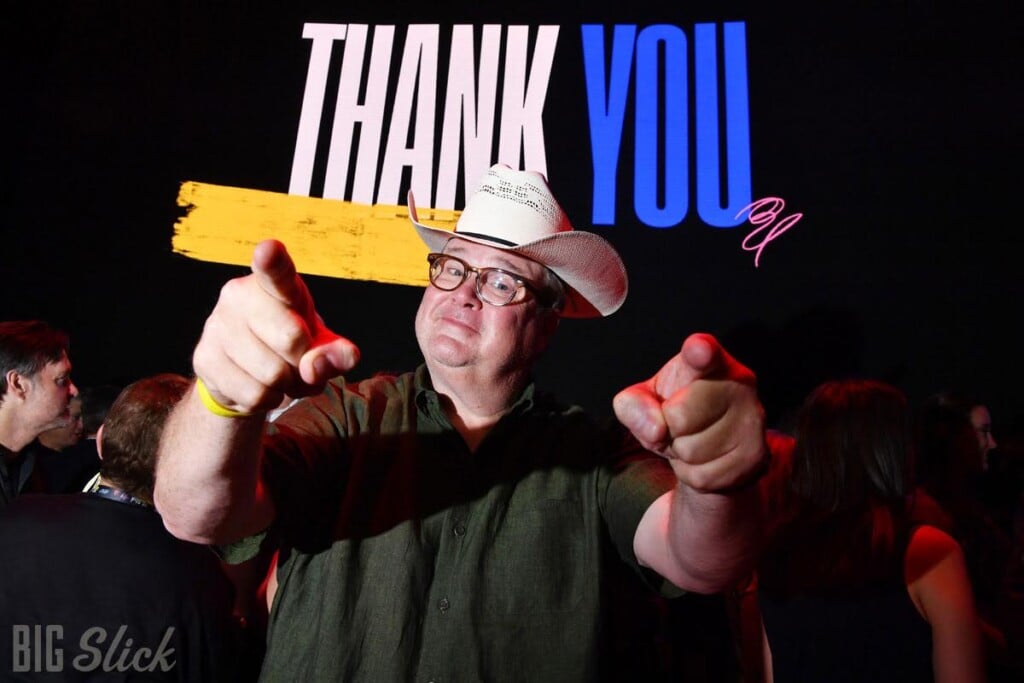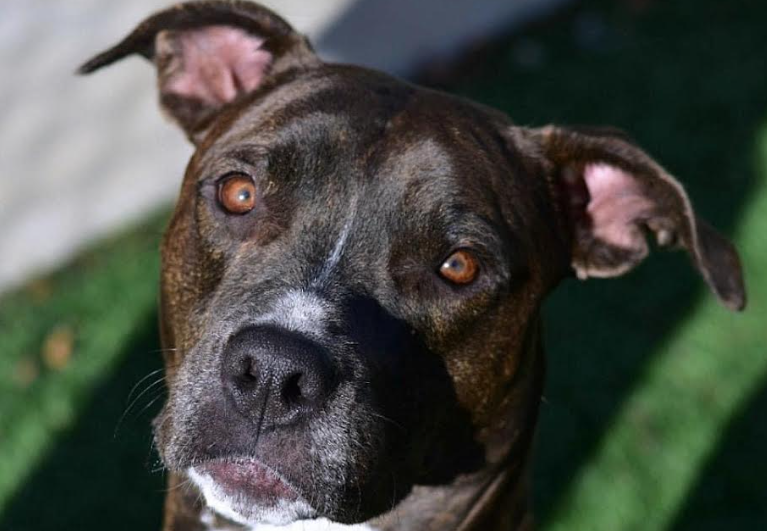Marvel comics artist John Romita Jr. on web-slinging in the modern era
“Oh, God. Disney would probably crap their pants because we got political.”
It’s hard to name a Marvel character to which artist John Romita, Jr. hasn’t added his distinctive touch. The paper may be stationary, but Spider-Man, Thor, Black Panther, Iron Man and Daredevil all look a little different after Romita has lowered his pencil.
Romita’s dad may have solidified how the Wall Crawler looked for years to come, but the younger artist, known to fans as JRJR, is also the co-author of Kick-Ass with Mark Millar and has teamed up with Neil Gaiman for The Eternals. He’s also applied his vision to DC characters like Batman and The Suicide Squad.
Before the phone conversation got started in earnest, we recalled how Marvel has often wrestled with real-world issues like racism and drug abuse. “Wouldn’t it be great if Spider-Man made a comment about supply chain problems? Oh, God. Disney would probably crap their pants because we got political,” Romita muses.
The Pitch: I read an interview with Chuck Jones where he said he was talking to a bunch of school kids, and the teacher told them, “This is the man who draws Bugs Bunny.” One of the kids blurred it out, and frankly, was right by saying, “This is the man who draws pictures of Bugs Bunny.” Would you say that’s the same for what you’ve done with the established Marvel characters?
I would normally say that if I were not 100 percent honest. Fortunately, I was brought up in an era in the industry when I was able to contribute to the stories a little bit. I was given a plot, and I was able to draw as I saw fit.
I’d say this storytelling involved a little bit more than just drawing. And that’s the part I’m very proud of. If a drawing is number five on a scale of one to 10, then I go to six with storytelling. How about that?
At Marvel, especially, the line between the illustrator and writer has been historically fluid.
Yes. I’m older than most of the writers I work with, unfortunately. They give me a lot of leverage because they say, “We know you can tell a story. So, even if I send you a script, please feel free to massage it as you see fit. And just let us know if you’re making any drastic changes.”
And my answer to them is, “I don’t. I’m not going to take anything out, but what I will do is rearrange and possibly add.” And then I’ll let them know in case they want to add some dialogue.
But it’s never, “I’ll never take anything out editorially or subject matter-wise, but I can massage the pacing and the storytelling.” And I’m very proud that they allow me to do that without screaming, and yelling, and throwing pots and pans.
When I chose something of yours to read before we talked, I’m happy that I selected the Black Panther story you and filmmaker Reginald Hudlin (House Party, Marshall) did together. The edition I bought included your story as well as the 1966 story Stan Lee and Jack Kirby did.
Correct. However, the influence of Kirby and even Reggie would say that Stan’s influence was in it for both of us. We were allowed to run with it in our own way, but the imagery and the power of the character was there from Stan and Jack.
Then Reggie and I went in our own direction, and I had a blast with the referencing of the African tribes and the imagery of the customs and the designs of the jewelry, etc., and then playing with Wakanda (the fictional African nation Black Panther rules).
That was fun because we added our own twist to it, and he did the same with the writing, and the female characters we created were in film. So Reggie and I got a chance to put our inference on it to a certain extent, but everybody that’s worked on the Stan Lee-Jack Kirby characters starts with what they’ve done.
It gives you a great buzz, so to speak. You could run with it in your own direction, and I think that’s what Reggie and I did. We got lucky.
It’s kinda cool, because your Wakanda looks more like a James Bond movie than what Kirby’s and Lee’s did.
That’s a good description. It was the intent from the beginning was to get a little bit more modern, but not to lose the flavor and then just give it that science fiction/supernatural look. The fact that it’s an ancient civilization was a great counterbalance to the imagery. So, we had a lot of fun with it, and Reggie was just a pleasure to work with.
You’re a serious cinephile, and as I was reading, I really thought I was looking at a movie on a page. Mr. Hudlin makes movies, and you’re heavily influenced by them. It was like chocolate and peanut butter, because you really couldn’t tell where one started and the other took over.
Well said. That would be the fact that Reggie is a filmmaker, and then he gave me the ultimate compliment about my storytelling in that it was cinematography and film-esque, which was very flattering. Then he allowed me to run with it as I saw fit, which was a true pleasure.
To show that Bugs Bunny was tough, Mel Blanc gave him an accent like yours, and Chuck Jones drew him with an erect posture. For the Coyote, Jones drew him slumped over. How would you draw somebody like Dave in Kick-Ass whose only superpower is good intentions versus Peter Parker who has been bitten by a radioactive spider?
That’s a great commentary. There’s a certain stance and body language in film, let alone what we do, and to show it in what we do here. It is not easy, but I think that comes along with common sense, this [Dave] is an awkward teen. Funny. We talk about awkward teens. I’m drawing Spider-Man who is usually depicted as a student.
Dave is an awkward, gawky, long-legged, gets his ass kicked all the time, and can’t be a confident-looking character. It can’t be a superhero-esque Captain America standing with his chest in the air. He can’t do that.
It’s the extension of the Spider-Man/Peter Parker thing, where he’s less confident in himself than Peter Parker, doesn’t get any superpowers, gets his ass kicked, and he’s afraid all the time.
In some ways, it seems like you and Mark Millar were taking some of the superhero comic book tropes and turning them on their ear.
You could say that, and the fact that Mark commented about this being in a certain extension of Stan Lee’s Peter Parker was just a glaring compliment. But we gave it its uniqueness, and that’s what we were very proud of.
Daredevil was the hero that helped launch your career. Why do you think a blind superhero brought out the best in you?
I don’t know if it was the blind superhero. I think it was the character itself, much like Spider-Man being from my neighborhood, if you’ll excuse the expression. I grew up with my father drawing street characters—Spider-Man and Daredevil.
It was such a difference from the perfect Superman character and then the very wealthy Batman character. So, these were street-level characters, and we loved it. And we could talk about it.
Peter Parker lived just down the block from us, and Daredevil was in a neighborhood, so to speak. And I enjoyed the fact that it was street, and I could use references from my own life in it. But the point is that I saw my father draw it when I was a kid, and it stuck with me.
I watched him do Daredevil #12—the cover. I’m had a nightmare one night. The monsters were under my bed, and they were coming out. So, I ran up through his attic at 3 a.m., and he was working on that cover.
I will never forget it because I climbed up the stairs to the attic, crying hysterically. I got to his desk, and apparently, my mouth hung open, and I stopped crying, because I was watching him work on that cover. And we still have that cover all these years later.
But the character itself—when he told me it was a blind character—was not so much the fascination that he could succeed as a blind character. It was just the fact that this is a superhero, and he’s blind. And I watched him draw it as a young man. And I was given the chance to work on the character plot and full pencils.
I was graduating from breakdowns as an inexperienced artist to full pencils and my two cents in the story. It was a combination of everything, and I was very, very happy with that.
With some artists, we only see the finished product, but you’ve done books where we see your pencil sketches without the ink. It’s like you’re showing us how the sausage is made.
There’s no shame in it. The factory process of drawing from start to the finish—there’s nothing wrong with it, because it’s my formula, and it works, and everybody else’s formula works for them. So what’s wrong with doing it?
I write notes to myself in the columns of the script. I call it thumbnailing, but other artists actually have to draw little doodles in their thumbnails.
I just write notes to remind myself what I’m doing. That’s my process, and then I go right to the board. Then I finish on the board. I’m proud of it only because it has worked, and I’m still doing the same exact thing I was doing 108 years ago. See, I started when I was very young,
That’s funny you mention that, because your father is still with us, and Steve Ditko and Stan Lee both lived to be in their 90s.
There’s something about it—the business. You’re not digging ditches, and you’re not climbing a lot of stairs. It’s also very mellowing in that you’re still an artist, even though it’s a different type of process. I get to watch my children grow up, and I get to hang out with my wife all the time.
I watched my parents 24/7 living with each other, and they have been married for over 60 years. They’ve known each other since they were eight. The fact that my wife and I are also together nonstop, and no large objects are thrown in the house, is amazing. My wife does not throw any sharp objects anymore.
You mentioned how well you and Mark Millar get along with each other and your spouses, and there are more women creating comics as well—like Marjane Satrapi from Persepolis.
That’s only natural, because talent and ambition obviously have no gender. For artists and writers that are female, if you didn’t meet them and you didn’t know their first name, you wouldn’t know. And that’s the best thing about it.
Do you think Spider-Man gives you a chance to play that some other characters don’t?
In a way, yes, because as I said before, there’s something about the street-level imagery of the character and that I can draw the local New York City street without having to get references on it, as opposed to drawing Thor or some supernatural character.
You don’t need references to those things unless you’re being told that a previous issue needs to be brought up. It’s a different kind of ease to me. It’s an ease, because as I said, I’m familiar with where we are with the characters.
And I love that I can throw a part of my neighborhood into characters like Spider-Man just by remembering that I lived down the block from this delicatessen, or this diner, or this bagel shop, and I can throw it in there without having to go out and get imagery or print anything out off of the internet.
That to me allows me to enjoy it more so than having to come up with the creative and the supernatural imagery. I loved every bit of drawing Thor and those types of characters because of the grand size of it all.
It must be gratifying that now people lump you in with Jack Kirby, your father, John Buscema, and others.
They do, huh. See, I bribe enough people, and I get some nice comments.
Listen, everything is relative. Everything I’m doing has been done, and you can ask any other artist with a little bit of humility. Anything we’ve done is derivative of those greats. My father, Kirby, Ditko—we haven’t done anything too original, because they did it before us, unless it’s coming up with something new visually or even a new story idea.
It’s nearly impossible. It’s like trying to come up with a new melody for a new song. It’s been there, done that, but it’s a great compliment. I grew up reading and watching these brilliant artists work, and it allowed me to get inspired, and I’ll take it. I accept the compliment. Thank you.
Because you are a cinephile, do you like the fact that some of your work has inspired movies now?
Yes. I’m flattered. The ultimate compliment is that somebody took what I was doing and put it into a film. The irony is that I took it from a film and put it into a comic.
To get back to that edition of Black Panther, since the ’90s, there has been a lot more subtle shading and colorization than the one-color work seen in the ’60s?
I just think it’s improved in overall talent, printing, and production values. It’s just a combination of everybody getting better. Listen, I’ve been doing it long enough that if I didn’t improve, there would be something wrong with me.
You do something every day for 12 hours a day, and you get better at it unless you’re a complete zombie and it’s the same as production. The production values have increased.
With film, the special effects in technology have improved hands over fist. Film hasn’t necessarily improved, because you still are reliant upon ideas. If somebody doesn’t come up with a good idea and a good screenplay, a great premise will fall and die on the vine, but with comics, it’s a great experimental area.
And film will steal from comics forever. And I’m very proud of that, but I think it’s comical, to tell you the truth.
John Romita, Jr. will appear at Planet Comicon at Bartle Hall April 22-24. Tickets are available at PlanetComicon.com.






